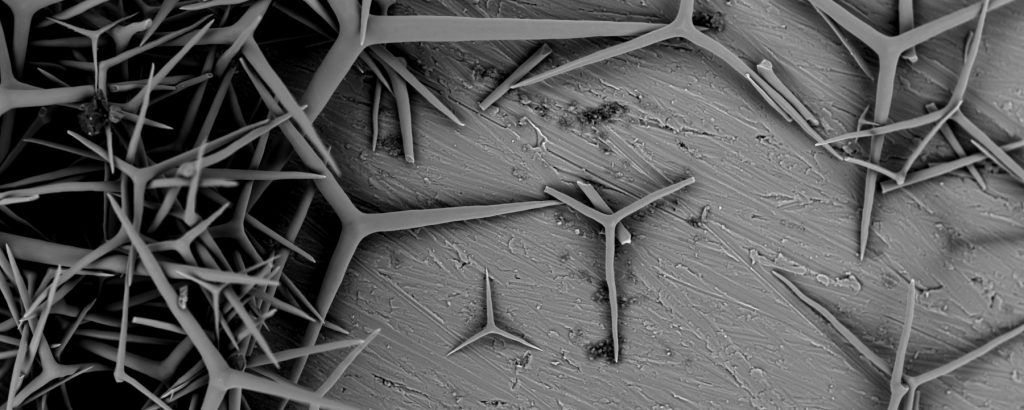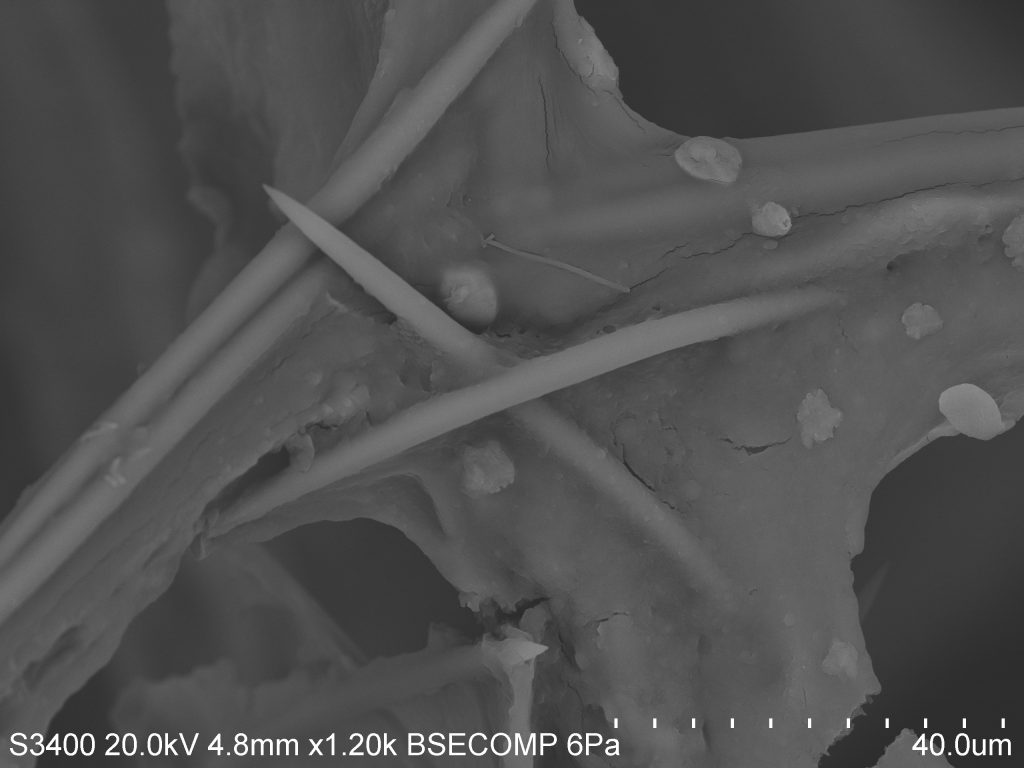We've dabbled a bit with invertebrates thus far, talking about house flies and various planktonic organisms, but now we're going to work our way into some more "visible" representatives, even if they often get overlooked. That group, the phylum Porifera, represents the 8,755 valid species of sponge, most all of which are marine. While some sponges are very colorful (such as the Caribbean Blue Sponge) or very large (Giant Barrel Sponge), most sponges are small or cryptic and require very fine-scale analysis for proper species identification. Seems like a perfect application for SEM technology! Continue reading below for an introduction to spicules (the "bricks" of sponge architecture) and how they can be used to identify individual species.
Some terminology, to begin, because sponge taxonomy is a whole other language in itself even by science standards. The exoskeleton of sponges (so, the parts that you see) are composed of a mixture of spongin and/or spicules. Spongin is a modified type of collagen protein, and forms the "fibers" or "mortar" that hold spicules together. Generally, species are identified based on the presence or absence of spongin in a sample. Spicules are the structural components of a sponge, or the "bricks," and the shapes, sizes, and composition are unique for each species. Together, you can look at these features under a microscope to make a positive identification.
Spicules are composed of either Calcium or Silica. Looking at composition is another way to narrow down possible sponge groupings. The "brightness" of the sample under the SEM is one way to guess at content. Calcium has a higher atomic number than Silica and is a better conductor, so it appears brighter. However, we recently learned how to use the Energy-Dispersive X-ray (EDX) function of our SEM. EDX detects and measures X-rays generated by a sample, the specifics of which are determined by elemental composition. With this tool, we were able to determine the elemental makeup of several geographically diverse samples.
Left: a siliceous deep-sea sponge whose spicules form discrete hexagonal patterns, the bottom of which you can see. Right: a calcareous semi-tropical sponge with a loosely-formed spicule matrix.
This is a very basic description of sponge identification, but there are loads of resources available on the internet, and spicules themselves can be quite beautiful. For more information, please feel free to visit:
- Shape of Life for short videos about sponges and their spicules
- The World Porifera Database for recent publications, photos, and information
- Southern California Association of Marine Invertebrate Taxonomists for the aforemetioned "dictionary" of spicule morphological terms



